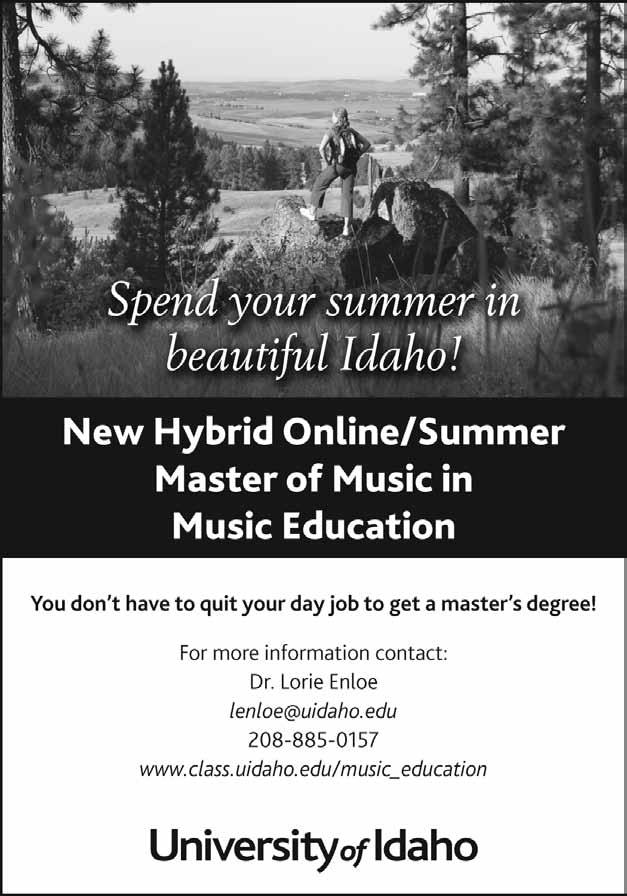
3 minute read
opening a Window
opening a Window into the World of the Kodály approach
Zoltan Kodály was a Hungarian music composer and educator who advocated for a better music education system in Hungary. He believed that there needed to be a better curriculum, with better teachers and more class time for music education. Kodály strongly believed that children should be taught using only the highest quality of music and that beginning music education in the early grades was vastly important to the overall musical development of children. His philosophies inspired the method, which was developed by his associates.
Advertisement
Kodály's students took his philosophies and developed a methodology that encompassed literacy, the importance of great music, teaching students at their level, and using folk music. This system has been greatly successful in Hungary.
over the summer, we attended level one of the Portland s tate university Kodály certification Workshop. The Workshop is an intense two-week training course for music educators in musicianship, methodology, folk music, and music materials for the K-8 curricula. after attending this course, we wanted to share some of the advantages of Kodály certification with others who may be wondering if they could benefit from this training. We interviewed the faculty of the summer certification Workshop to get more information about the Kodály approach.
Interview with the faculty of the Summer 2009
Portland state university
Kodály certification Workshop: s usan Brumfield Ph. d., Katalin Kiss d.L. a ., c arol Brown m .Ed., a ndy Paney Ph. d., and Kristin Lyman Ph.d
What skills and resources do teachers gain from Kodály courses?
Kristin Lyman: I developed my musicianship skills and learned a new way to approach singing and hearing music. I wished I’d had the intensity of training in my undergraduate degree. one of the other important things you get out of the course is the scope and sequence of what to teach, when and how to be really efficient and lead your students to the right answer. I’m seeing in folk music more and more now, where things really come from, what the true source is, how it has been modified, and the historical content behind it. are we performing things in an authentic way, being true to the original performance, or are we modifying things and losing some of the intention? susan Brumfield: In terms of polishing up your own music skills, and pushing them to the next level, that’s a very important thing for people who teach other people music. We should all improve our own skills. In terms of resources, most
by Travis cushman & dawn Kinman
people who teach music in a general classroom probably had a limited number of classes, if any, that was devoted to the materials you actually teach 1st, 2nd, 3rd grade, etc. You learn Brahms and m ozart, but you probably didn’t learn a lot of african ring games or jump rope rhymes.
What are master copies and the master index and how do they help teachers?
carol Brown: Taking the time to sit down and look at the huge quantity of material that’s available and decide which of those songs you want to use. Then to decide from those songs what’s the best pedagogical content to draw from it. It’s a way of organizing your material into an index that makes lesson planning a breeze. When you have a beautiful index life is good. If you do expand that idea to symphonies, piano pieces or folk dances … if you have all of that indexed you can figure out how you’re going to weave all of it together. and maybe if it’s in your index, you won’t forget to use all of that for a particular rhythm or a particular melody. The principles are there to use the best music at a developmentally appropriate level. andy Paney: It has to do with a sequenced approach, sound before symbol.
Kristin Lyman: If you can analyze a song that only contains so and mi and find all the different ways it applies to what you’re teaching, then you can take those tools and apply it to a larger choral piece or a larger band work. There’s a common goal that we improve the level of musicianship and literacy, so that students learn and have a quality experience with music.
What is Kodály like as a teaching method?










